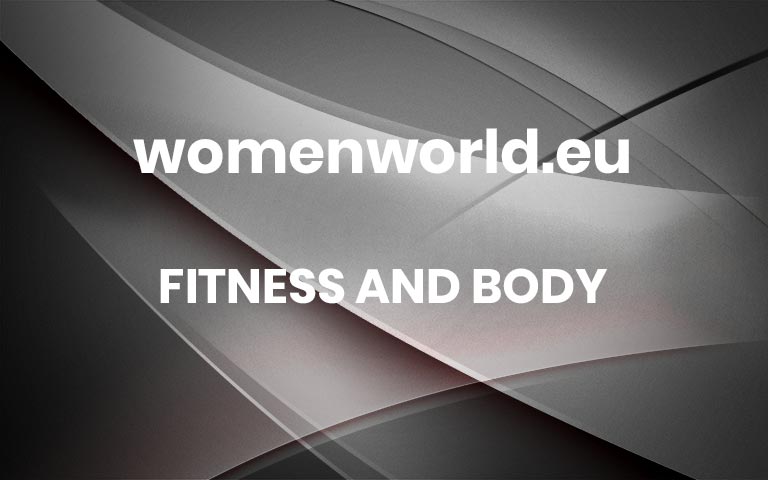The pair of running shoes you choose can make or break your run. You ever slipped on a pair only to feel that red-hot feeling of an incoming blister a few kms into your first run? Or you take your shoes off after a long run to find a blackening toenail? Whatever your woeful running horror story is, one thing is for sure, you need a solid pair of takkies to help you hit the tar, treadmill or trails. And we’re here to help.
What To Consider When Looking For A New Pair Of Running Shoes
There are a few questions you’re going to want to ask yourself before you head out to your nearest Sportsmans Warehouse one the next available Saturday morning.
What will you mostly be using your shoes for?
How far do you want to run?
What kind of terrain are you going to be running on?
Do you want to use them for other kinds of training (like HIIT or strength training)?
READ MORE: The Top South African Road Running Events To Look Out For In 2023
What To Look For In A Shoe
Cushioning: This helps the ground feel softer and encourages ground-contact stability.
Weight: Lighter shoes usually have less cushioning; they’re designed for your speedy runs. Heavier shoes tend to have more cushioning and are better for your longer runs.
Drop: This is the difference in cushioning (or height) from the heel to the front of the foot. Basically, when you’re barefoot your heel and forefoot touch the ground so the drop is 0mm. Slip on a pair of particularly cushioned running shoes (or some serious heels) and the drop starts to increase. Drop tends to range from 0mm to 14mm, with 10mm being the most common heel drop.
Pronation: Many shoes will state the type of pronation they are suitable for (but every person is different). Make sure you choose a shoe that’s suitable for you after doing a gait analysis with an expert (hint: they’re usually free). Not sure what these words mean? Keep on reading!
Do You Need A Gait Analysis For Running?
Many running coaches, trainers and running brands recommend getting a gait analysis. But what does that actually mean? In simple terms, your gait describes the way in which you walk. So a gait analysis is an exam that gives you information about your walking and running style.
Everyone is different and knowing your gait is a huge part of knowing your running style. The more information you have, the more equipped you are to choose the right pair of shoes for you and ultimately prevent injury.
“Knowing your gait can help you grow as a runner and help prevent injuries in the future. Each runner has a specific gait, and not knowing yours could result in an injury,” according to Asics.
What Does Pronation Mean?
A large part of gait analysis focuses on determining your pronation. When it comes to running, pronation refers to how your foot naturally rolls inward after your heel strikes the ground. Ideal pronation would result in this motion (the natural inward roll) absorbing the shock from the force of your heel coming into contact with the ground.
Once your pronation has been determined, you want to try to match yourself to a running shoe that adjusts for your specific pronation. Wearing the correct running shoe will make you a more efficient runner and help you avoid those jog-ending injuries.
3 Types Of Pronation:
Neutral pronation: When your foot lands outside of your heel and then rolls naturally inward (about 15%), absorbing the shock and keeping your ankles aligned. If this is you, try the Under Armour FLOW Velociti Elite.
Overpronation: When your feet roll inward too much. This requires a more sturdy running shoe so that your foot can be kept in place. Try the PUMA ForeverRUN NITRO or Asics Gel-Nimbus™ 25 if you’re an overpronater.
Supination or underpronation: When the feet don’t roll inward enough. This requires a shoe that has plenty of cushioning, like the Salomon Spectur.
READ MORE: These Are The Stretches You Should Be Doing Before Race Day
5 Places To Get A Gait Analysis In South Africa?
Sportsmans Warehouse
Sportsmans Warehouse has RUN-id, an industry-leading advanced gait analysis technology developed by German engineer Jens Hellenbacher. It’s in selected stores around South Africa (Gauteng, Western Cape, Pretoria, KZN and Eastern Cape), is completely free and only takes a few minutes. Find out more here.
ASICS Mall Of Africa
If you’re a runner, you’ll be familiar with Asics. They have a huge range of shoes to suit any type of runner. So if you’ve got your heart set on your next pair being from the brand, why not head straight to the Asics store at Mall Of Africa for a gait analysis? The analysis is free of charge. Find out more here.
Total Sports
Total Sports is really changing the game when it comes to getting active (have you seen their new TS-ACTV8 workout range???). Their free gait analysis is available at Totalsports in Sandton, Mall of Africa, Canal Walk, Cavendish, Gateway and more.
The Athlete’s Foot
You can pre-order your running and gait analysis at the shop over here. They also give an in-depth breakdown of what they will be analysing and why it matters here.
The Sweat Shop
Head to The Sweat Shop Dunkeld in Johannesburg or The Sweat Shop Claremont in Cape Town for shoe fittings, gait analysis and premium advice.
Now that you know a little bit more about what to look for in your next pair of running shoes, you’re ready to shop. Whether you’re a newbie or an experienced runner, hit the ground running with these newly-released running shoes.
READ MORE: Beginners 5K Running Training Plan And How To Crush It In Just 6 Weeks
PUMA ForeverRUN NITRO
We Love It For: Being A Solid All-Rounder
Weight: 224g (women’s UK4.5)
Drop: 10mm
Good For: Overpronators
Say hello to this fabulous addition to the Nitro family; the ForeverRUN Nitro. This stability shoe encourages an optimal running stride and runners have found it to be more stable, help reduce pronation velocity and reduce peak tibial shock/acceleration. It’s time to leave any niggling injuries in your dust.
Asics Gel-Nimbus™ 25
We Love It For: Its Marshmallowy Cushioning
Weight: 255g
Drop: 8mm
Good For: Neutral pronators and overpronators
This new iteration of Asics’ world-famous runner is ideal for long, slow, distance runs due to the max cushioning (you can thank the new PureGEL™ tech for that). But don’t take our word for it: a study of 100 runners testing 5 pairs of running shoes rated this the most comfortable shoe. Read our full review here.
Reebok Floatride Energy 5
We Love It For: Affordable, Lightweight Training
Weight: 210g (women’s UK4)
Drop: 8mm
Good For: Neutral pronators
Designed to support women no matter their distance or pace (because running is for everybody and every body), the breathable, lightweight upper keeps your feet cool and comfy. It’s a shoe that punches well above its weight with Floatride Energy Foam for cushioning and a midfoot plate for torsional stability.
Under Armour FLOW Velociti Elite
We Love It For: Marathon PBs
Weight: 213g
Drop: 8mm
Good For: Neutral pronators
Meet UA’s first super/carbon race shoe. This highly-responsive and cushioned ride gives you everything you need to crush race day. And it packs some serious tech; a full-length thermoset carbon plate for snappy strides, a WARP upper that provides lockout and lightweight containment and a Microperf tongue that’s breathable and lightweight for zero irritation.
READ MORE: Long-Distance Trail Running: Here’s Exactly How To Prep And Push Through
Salomon Spectur
We Love It For: Speed Training
Weight: 258g
Drop: 6mm
Good For: Neutral pronators and underpronators
Wanna go faster, have fun and smash a new 5km PB? This snappy shoe is your best bet. With their signature rocker geometry, R.Camber, ensuring a quicker transition, you’ll spend less time on the ground and more time moving forward. You’ll be even speedier thanks to their lightweight and soft Energy Surge foam that evens out the impact and delivers a smoother foot strike.
adidas Ultraboost Light
We Love It For: Road Running
Weight: 299g (UK8.5)
Drop: 10mm
Good For: Neutral pronators and light overpronators
Made with 30% lighter BOOST material, this female-tailored shoe has a narrower heel fit and lower instep curve that’s designed to reduce blisters (eina!) and heel slip. It’s perfect for those runners who want to clock in kms a few times a week and need a reliable running buddy to do just that.
PUMA Fast-Trac NITRO
We Love It For: Doing It All, Literally
Weight: 250g (women’s UK5)
Drop: 8mm
Good For: Neutral pronators
Okay, so maybe you’re someone who likes to do a little bit of trail running, some road running and a social hike or two on the weekends. This is for you, girl! No matter the terrain, this shoe will tackle it with ease. We’re talking loose trails, gravel, you name it! You can thank the dual-foam midsole – combining full-length NITRO foam and a layer of ProFoamLite – and the durable PUMAGRIP ATR outsole, for that. Plus, the integrated eyestays allow for a snug fit and amazing lockdown. You’ll be wowed by how great it feels on the road.
Skechers GO RUN Consistent – Energize
We Love It For: Walking
Weight: 213g (women’s UK7)
You don’t have to be running marathons to enjoy the health benefits of increasing your step count. You can step up your cardio in these lightweight lace-up running style shoes. They’re crafted with 100% vegan materials and feature an engineered mesh upper, responsive ULTRA LIGHT cushioning and a Skechers Air-Cooled Goga Mat™ cushioned insole. Hot girl walks, incoming!
Nike ZoomX Invincible Run 3 Flyknit
We Love It For: Daily Training
Weight: 258g
Drop: 9mm
Good For: Overpronators
The ZoomX foam has a cult-like following from runners around the world and for good reason. The strobel lining underneath its insole gives it a firmer, more stable ride with less energy return – and there’s a longer heel clip to improve stability. Try before you buy though, some runners find the heel clip too intrusive for them.
READ MORE: 5 Of The Best Post-Run Snacks, According To A Dietician
New Balance FuelCell SuperComp Elite v3
We Love It For: Race Day
Weight: 179g
Drop: 4mm
Good For: Neutral pronators and underpronators
New Balance promises big things, saying “It’s not just a running shoe. It’s a racing shoe.” So this is the perfect running buddy for marathon races and longer, high mileage runs. Comfortable, speedy and with a next-level carbon-fibre plate so you can run faster, for longer, new PBs are all but guaranteed!
Women’s Health participates in various affiliate marketing programmes, which means we may get commissions on editorially chosen products purchased through our links to retailer sites. More



